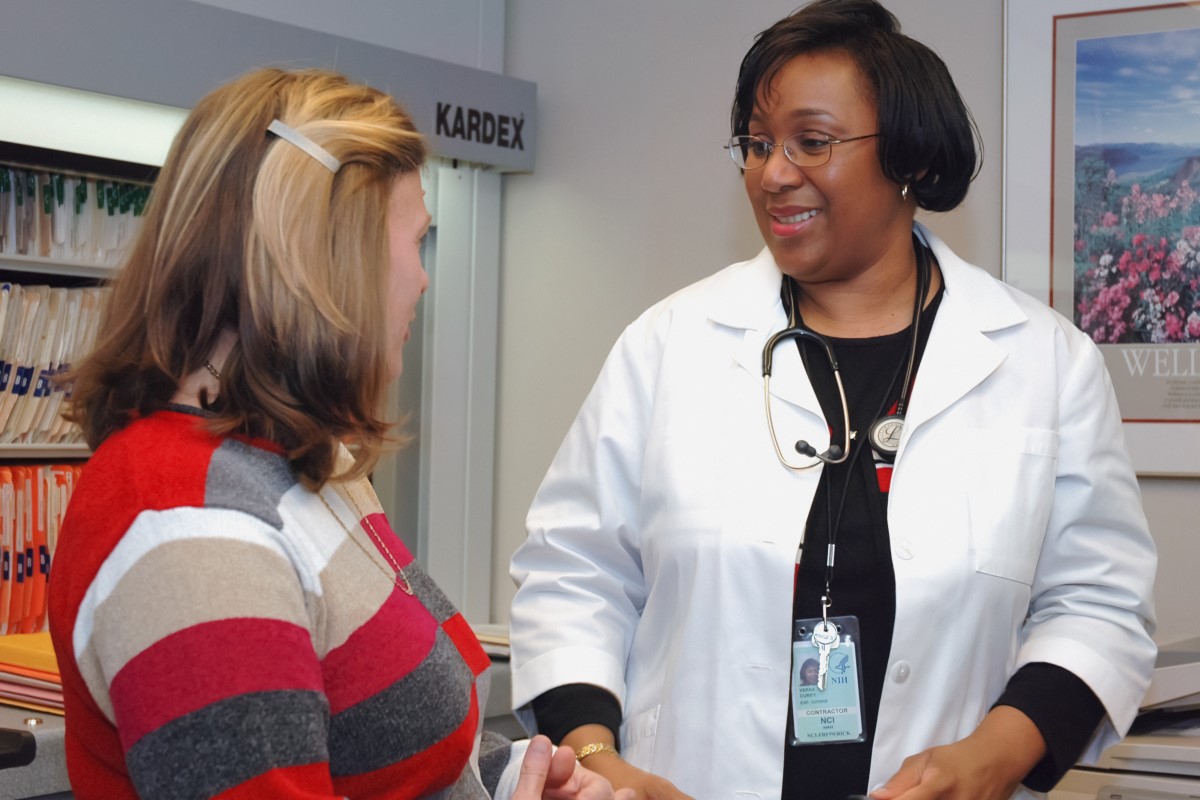The Conversation
Patient engagement vital in training health professionals
September 22, 2023
Share

Eighty-six per cent of Canadians are worried about their health-care systems. Health-care professional organizations like the Canadian Medical Association and the Canadian Association of Schools of Nursing are sounding the alarm about the severe shortage of health-care providers. This shortage is contributing to Canada’s health-care crisis.
 Canada urgently needs more trained health-care professionals. While they may not know it, everyone in Canada can play a key role in educating future health-care providers.
Canada urgently needs more trained health-care professionals. While they may not know it, everyone in Canada can play a key role in educating future health-care providers.
Each encounter that health-care students have with patients, families and communities helps them develop real-world understanding of the various needs of the diverse Canadian population.
Canada’s shortage of health-care workers
The House of Commons Standing Committee on Health’s March 2023 report titled Addressing Canada’s Health Workforce Crisis explored and substantiated this shortage of health-care professionals. This report primarily focused on physicians and nurses. Canada anticipates a shortfall of 78,000 physicians by 2031, and 117,600 nurses by 2030.
Other professions are also sounding the alarm of practitioner shortages, including dental professionals, medical laboratory specialists, occupational therapists and pharmacists.
In addition to these predictions, there are significant concerns about keeping the care providers we currently have. A 2022 report from the Canadian Federation of Nurses Unions found that 94 per cent of nurse respondents showed signs of burnout, and over half wanted to leave their current job. Other health professions have raised similar concerns.
Addressing the shortage
There is no quick fix to these complex problems, and Canada is responding in a variety of ways. This includes recruiting internationally trained practitioners, funding strategies to improve retention and increasing educational seats to train more future health-care providers.
These responses are being created from federal, provincial (such as Nova Scotia) and local levels. However, these strategies are not quick fixes and efforts may not be successful.
Retention efforts have not been as effective as anticipated, as financial incentives do not appear to have the same influence they might have had in the past. International recruitment is fraught with ethical concerns and complex processes applicants need to work through in order to become licensed to practice.

Education investments
Significant provincial investments are being announced to create more seats in education programs for health-care professional students. The Alberta government is investing $72 million for 3,400 new seats in a variety of health-related training programs and $20 million for the creation of 120 new physician seats.
Saskatchewan is adding 550 health-care provider education seats. Manitoba announced an investment of $200 million for 2,000 health-care professionals, including 80 new physician seats and four respiratory therapy students.
Other provinces are also investing in a variety of ways such as educational program grants to expand enrolment in Ontario, and student financial support in Prince Edward Island.
While increased training opportunities can increase the future workforce, having more students also requires additional resources and learning opportunities. Education for health-care professionals varies by the type of provider, and can range from certificate programs to graduate degrees.
How Canadians can help
We are a team of interdisciplinary researchers who teach health-care professionals in their foundational training. We know that despite significant differences in health-care education programs, one fundamental component for all learners is interacting with patients and families.
That means all Canadians play an essential part in educating future health-care providers. With more students enrolling, Canadians will have even more engagement with students in health-care settings.
Most health-care education programs include public interaction. Some public members purposefully engage. For example, some become guest speakers in classes, and share personal experiences with illness and health care. But more commonly, people engage with health-care professional students while looking after their health needs.
Canadians can anticipate interacting with students in common health-care spaces such as pharmacies, physiotherapy clinics, dental clinics, public health clinics, doctor’s offices, hospitals or outpatient clinics. But students may also be found in less expected places such as food banks, non-profit community organizations, schools and community settings.
Members of the public may feel less inclined to interact with students. This can be due to the perceived increased time it takes, worries about students’ knowledge or abilities, or because they might feel that they don’t have anything to contribute. However, it is important for Canadians to know about the benefits of these interactions for both students and patients.
What Canadians can teach health-care professional students
Research has identified that student encounters with public patients and family members contributed to the development of their communication, compassion and empathy skills. It also helped decrease stigma towards traditionally stigmatized groups and conditions, such as those with mental illness.
Interacting with the Canadian public also increased students’ ability to use appropriate language and work with patients. It enhanced their self-confidence and their motivation in caring for the public.
How does this impact Canadians?
While these interactions benefit student learning and will help contribute to a larger health workforce, they have also been found to benefit the public.
Research has found that student encounters can increase a patient’s sense of empowerment to participate in their own health with shared decision-making. Additionally, there is a potential for the improvement of overall health outcomes of patients. One study found patients were more knowledgeable and better able to manage their own medications after engaging with student practitioners.
The shortage of health professionals in Canada, and globally, is of sincere concern. To address this, it is essential that we increase the number of professionals being trained. This requires the Canadian public’s assistance as they encounter more health-care professional students.
Investing your time in interacting with students has benefits for the students and for you. Canadians can all play a part in building the future health workforce we desperately need. As health-care professionals, we thank you for the important role you play in educating and shaping our students and future health workforce.
Bryn Keogh co-authored this article. She is an undergraduate student at the University of Calgary in communication and media studies and received an Alberta Innovates Summer Research Studentship.![]()
Lisa McKendrick Calder, Associate Professor, Nursing, MacEwan University; Eleftheria Laios, Educational Developer, Queen's University, Ontario; Kerry Wilbur, Associate Professor and Executive Director, Entry-to-Practice Education, Faculty of Pharmaceutical Sciences, University of British Columbia; Lorelli Nowell, Associate Professor and Assistant Dean of Graduate Programs, Faculty of Nursing, University of Calgary, and Whitney Lucas Molitor, Associate Professor and Program Director, Occupational Therapy Department, University of South Dakota
This article is republished from The Conversation under a Creative Commons license. Read the original article.
The Conversation is seeking new academic contributors. Researchers wishing to write articles should contact Melinda Knox, Director, Thought Leadership and Strategic Initiatives, at knoxm@queensu.ca.



